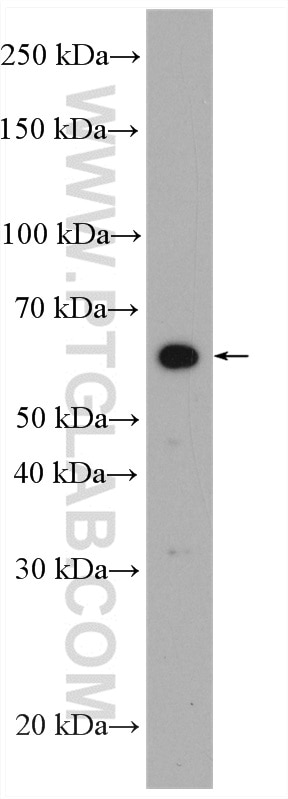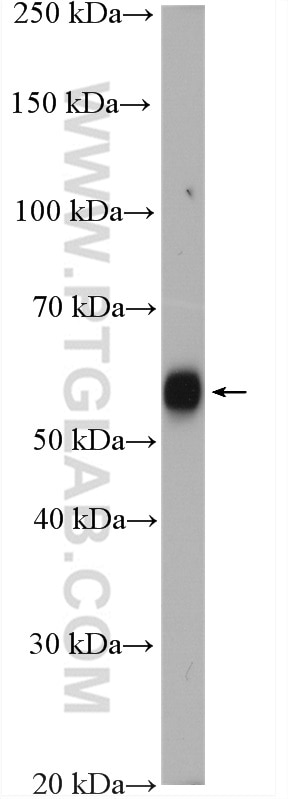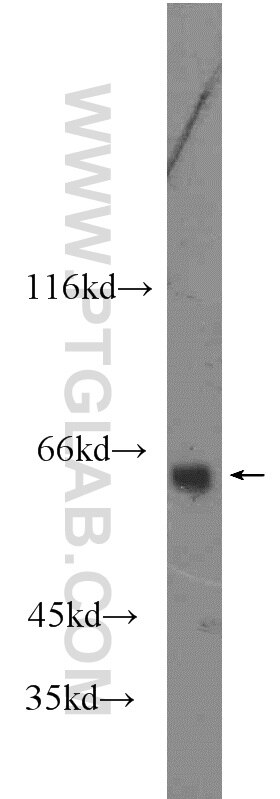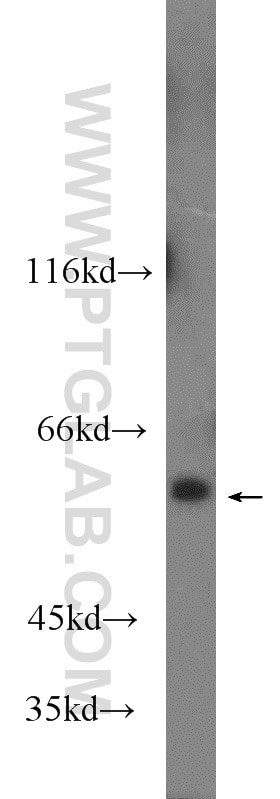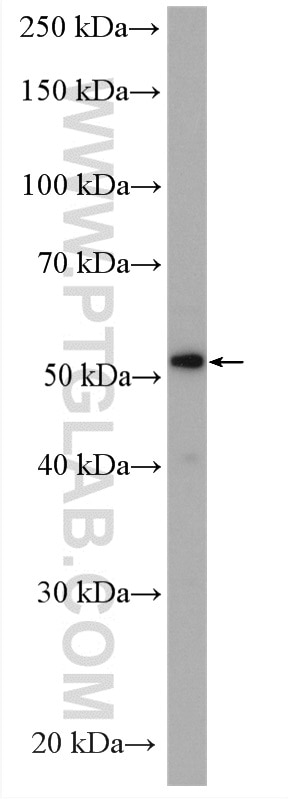- Phare
- Validé par KD/KO
Anticorps Polyclonal de lapin anti-VNN1
VNN1 Polyclonal Antibody for WB, ELISA
Hôte / Isotype
Lapin / IgG
Réactivité testée
Humain, souris
Applications
WB, IHC, IF, CoIP, ELISA
Conjugaison
Non conjugué
N° de cat : 21745-1-AP
Synonymes
Galerie de données de validation
Applications testées
| Résultats positifs en WB | tissu rénal de rat, cellules BxPC-3, cellules PC-13, tissu rénal de souris |
Dilution recommandée
| Application | Dilution |
|---|---|
| Western Blot (WB) | WB : 1:1000-1:4000 |
| It is recommended that this reagent should be titrated in each testing system to obtain optimal results. | |
| Sample-dependent, check data in validation data gallery | |
Applications publiées
| KD/KO | See 1 publications below |
| WB | See 9 publications below |
| IHC | See 2 publications below |
| IF | See 1 publications below |
| CoIP | See 1 publications below |
Informations sur le produit
21745-1-AP cible VNN1 dans les applications de WB, IHC, IF, CoIP, ELISA et montre une réactivité avec des échantillons Humain, souris
| Réactivité | Humain, souris |
| Réactivité citée | Humain, souris |
| Hôte / Isotype | Lapin / IgG |
| Clonalité | Polyclonal |
| Type | Anticorps |
| Immunogène | VNN1 Protéine recombinante Ag16501 |
| Nom complet | vanin 1 |
| Masse moléculaire calculée | 513 aa, 57 kDa |
| Poids moléculaire observé | 55-72 kDa |
| Numéro d’acquisition GenBank | BC096268 |
| Symbole du gène | VNN1 |
| Identification du gène (NCBI) | 8876 |
| Conjugaison | Non conjugué |
| Forme | Liquide |
| Méthode de purification | Purification par affinité contre l'antigène |
| Tampon de stockage | PBS with 0.02% sodium azide and 50% glycerol |
| Conditions de stockage | Stocker à -20°C. Stable pendant un an après l'expédition. L'aliquotage n'est pas nécessaire pour le stockage à -20oC Les 20ul contiennent 0,1% de BSA. |
Informations générales
VNN1(Vascular non-inflammatory molecule 1) is also named as Vanin-1, Pantetheinase, Tiff66. It is a GPI-anchored 70-kDa protein with a high degree of homology with GPI-80 (also known as VNN2), a molecule expressed by human phagocytes and involved in leukocyte adhesion and migration. Vanin-1 is predominantly expressed by resident tissue cells and acts at the level of epithelial cells and surrounding hematopoietic cells by paracrine 2-Mercaptoethylamine release(PMID:17163446). The full length VNN1 has a signal peptide, a propeptide and six glycosylation sites. According to some authors, the variations which varied between 55 and 72kDa may be due to different degrees of glycosylation of the protein and cleavage (JOSE A et al. 2001).
Protocole
| Product Specific Protocols | |
|---|---|
| WB protocol for VNN1 antibody 21745-1-AP | Download protocol |
| Standard Protocols | |
|---|---|
| Click here to view our Standard Protocols |
Publications
| Species | Application | Title |
|---|---|---|
Theranostics Pancreatic ductal deletion of S100A9 alleviates acute pancreatitis by targeting VNN1-mediated ROS release to inhibit NLRP3 activation.
| ||
Sci Signal Lipid-Induced Toxicity Stimulates Hepatocytes to Release Angiogenic Microparticles That Require Vanin-1 for Uptake by Endothelial Cells. | ||
J Lipid Res VNN1 Promotes Atherosclerosis Progression in apoE Deficiency Mice Fed a High Fat High Cholesterol Diet. | ||
J Proteome Res Novel Elements of the Chondrocyte Stress Response Identified Using an in Vitro Model of Mouse Cartilage Degradation. | ||
PLoS One Circulating Extracellular Vesicles with Specific Proteome and Liver MicroRNAs Are Potential Biomarkers for Liver Injury in Experimental Fatty Liver Disease. |

